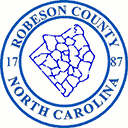Parasite Management in Sheep and Goats
go.ncsu.edu/readext?953564
en Español / em Português
El inglés es el idioma de control de esta página. En la medida en que haya algún conflicto entre la traducción al inglés y la traducción, el inglés prevalece.
Al hacer clic en el enlace de traducción se activa un servicio de traducción gratuito para convertir la página al español. Al igual que con cualquier traducción por Internet, la conversión no es sensible al contexto y puede que no traduzca el texto en su significado original. NC State Extension no garantiza la exactitud del texto traducido. Por favor, tenga en cuenta que algunas aplicaciones y/o servicios pueden no funcionar como se espera cuando se traducen.
Português
Inglês é o idioma de controle desta página. Na medida que haja algum conflito entre o texto original em Inglês e a tradução, o Inglês prevalece.
Ao clicar no link de tradução, um serviço gratuito de tradução será ativado para converter a página para o Português. Como em qualquer tradução pela internet, a conversão não é sensivel ao contexto e pode não ocorrer a tradução para o significado orginal. O serviço de Extensão da Carolina do Norte (NC State Extension) não garante a exatidão do texto traduzido. Por favor, observe que algumas funções ou serviços podem não funcionar como esperado após a tradução.
English
English is the controlling language of this page. To the extent there is any conflict between the English text and the translation, English controls.
Clicking on the translation link activates a free translation service to convert the page to Spanish. As with any Internet translation, the conversion is not context-sensitive and may not translate the text to its original meaning. NC State Extension does not guarantee the accuracy of the translated text. Please note that some applications and/or services may not function as expected when translated.
Collapse ▲School-aged children are going back to school, which for me means summer is over. I remember as a child feeing like summer would never end. Technically the first day of fall isn’t until mid-September, but I am looking forward to some cooler weather and the fall activities. I want to briefly share about parasite management in sheep and goats.
Parasite management tends to be one of the bigger issues among sheep and goat producers. Haemonchus Contortus worms, also called Barber Pole worms, are an intestinal parasite that plagues sheep and goats. Barber Pole worms are blood-sucking worms that cause anemia and thrive in warm, wet conditions – typical in the Southeast United States of America. They lead to decreased growth, decreased milk production, and death. They have a three-week life cycle and can lay abut 5,000 eggs per day. Adult worms lay eggs in the abomasum of the sheep or goat, which are passed in the feces and go through two molts to be an infective L3 larvae in the environment. The L3 larvae can then migrate up blades of grass in drops of moisture to be ingested by sheep or goats, continuing the life cycle. L3 larvae can survive in pastures for up to six months, depending on temperature and moisture. If you are thinking about purchasing sheep or goats, there are some things that can be done to help control Barber Pole worms that include stocking rate and pasture management, and strategic deworming to avoid anthelmintic resistance.
Deciding on stocking rate – the number of animals in your flock or herd – and managing pastures will help control parasite burdens. The recommended number of animals per acre is six to eight goats per acre and four to six sheep per acre. Any more will require more intensive grazing and animal management. The general rule is 20 percent of animals produce 80 percent of eggs that are deposited in the pasture. Continual grazing of pastures will mean more worm eggs are deposited on pastures, and consequently, larvae will accumulate. Incorporating rotational grazing will help to control parasite loads and be better for grass growth and regrowth. Most of the worm larvae are concentrated in the lower three inches of the grass. If pastures are rotated before they get less than three inches tall, sheep and goats don’t have much of a chance to pick up larvae. Overgrazing pastures can have negative effects on grass stands. It can cause stress and reduce grass vigor, which can lead to increased weed pressure and bare spots.
Strategic deworming of animals will also help decrease anthelmintic resistance and therefore reduce worm populations. Incorporating FAMACHA can help reduce resistance. FAMACHA is a management tool that examines the sheep or goat’s eyelid for anemia, since anemia is an indication of Barber Pole worms. Gently pull down the bottom eyelid and look at the color. The darker red the eyelid, the less parasite burden and no reason to deworm, and vice versa.
There are other considerations to think about, like using resistant sheep and goat breeds, planting tannin-rich forages, multispecies grazing, and optimizing good nutrition. The point is, there is not a “one solution fits all” for managing parasites. It takes a multistep, integrated approach.
For more information, please contact Taylor Chavis, Extension Livestock Agent with N.C. Cooperative Extension, Robeson County Center, at 910-671-3276, by email at taylor_chavis@ncsu.edu, or visit our website.




